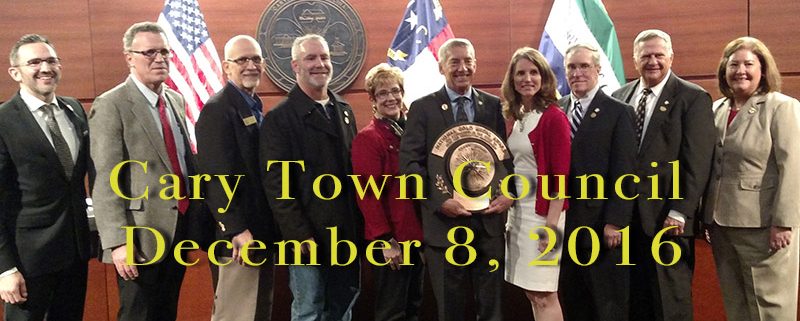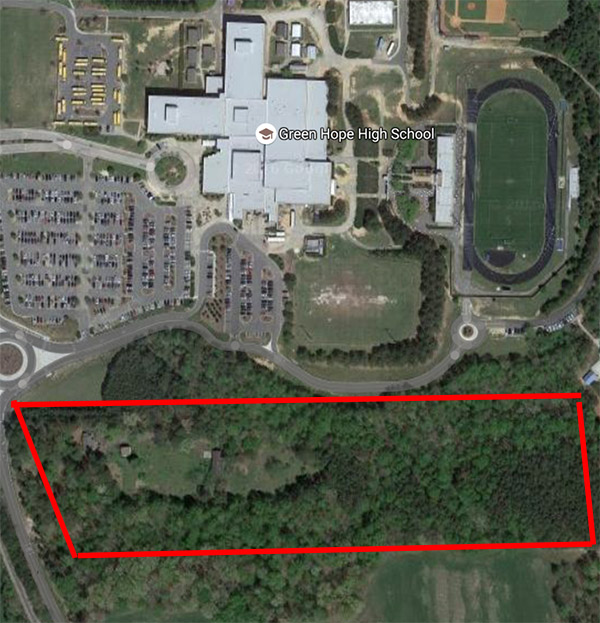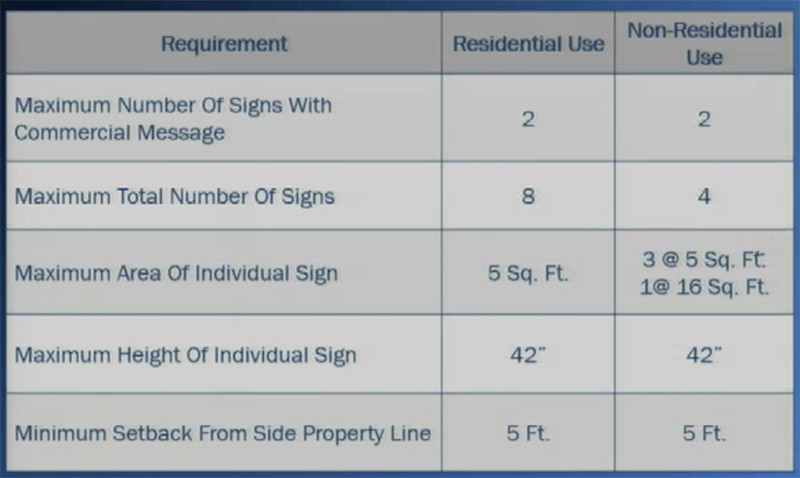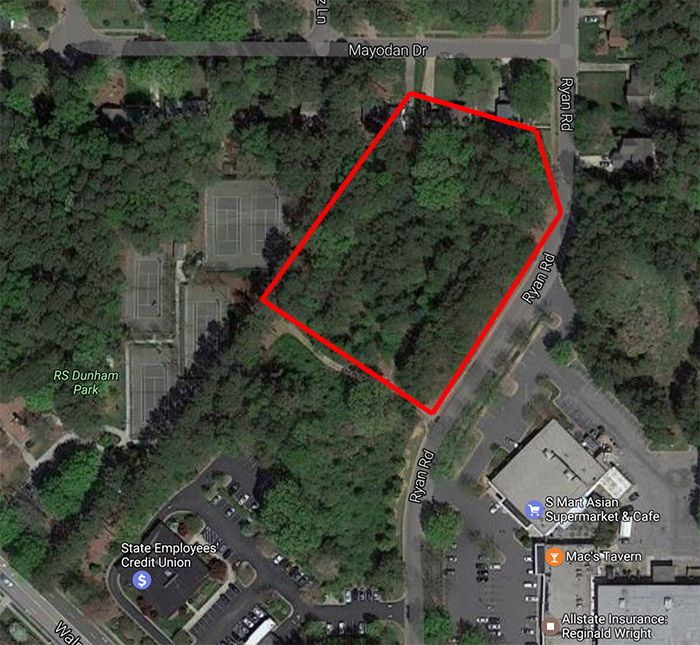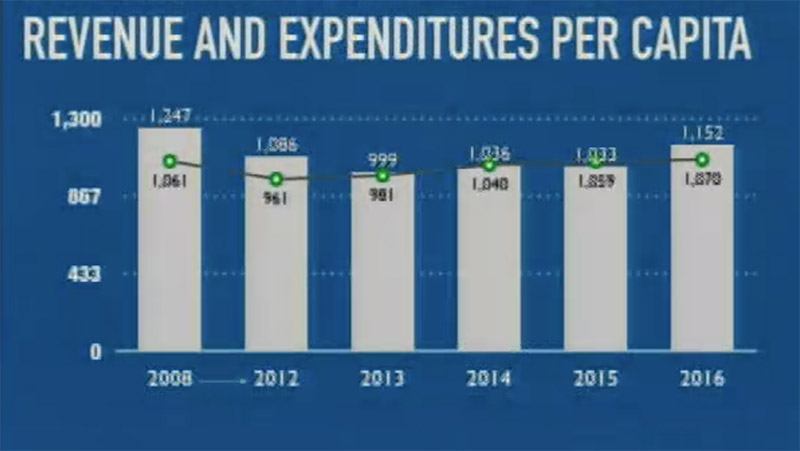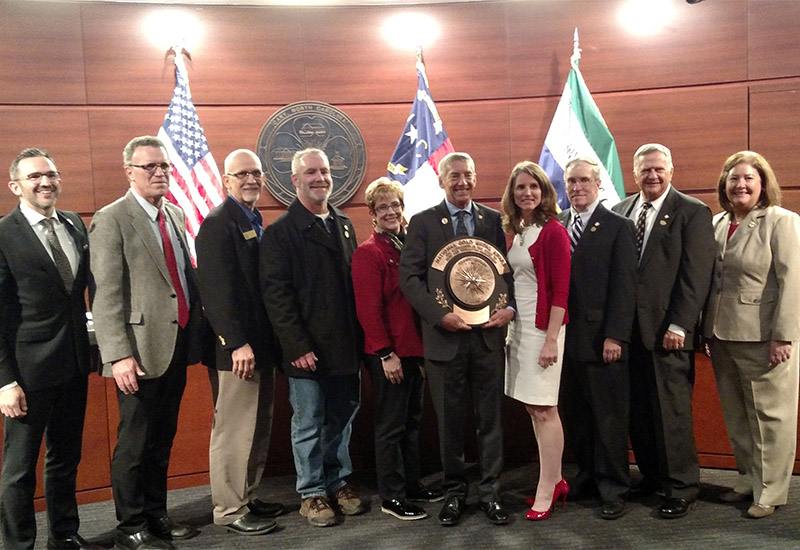Cary Town Council: 12/8/16
Cary, NC – Cary’s Town Council met to discuss proposed new developments in town, passed a widely-discussed rezoning, went over Cary’s financials and recognized several awarded staff members.
After coming before Town Council and being tabled twice, finally the Cary Town Council voted on the Mills Rezoning that would put a residential area just South of Green Hope High School. The plan came back to Town Council after members voiced concerns ranging from density to it not having a “sense of place,” as Councilmember Jennifer Robinson put it.
When it came before Town Council for its final vote, several conditions were added, including limited detached dwelling units or townhomes to a maximum of 40, adding two car garages, putting pedestrian connections in place, increasing buffer sizes and making certain design requirements. During Public Speaks Out, one of the lawyers for the developers read through these conditions.
Mayor Harold Weinbrecht was the deciding vote on the matter, as the other councilmembers had largely made their stances known.
“I do think we now have a better proposal,” Weinbrecht said. “I was on the fence for a while and I don’t like being on the fence.”
In addition to finding the proposal more palatable with the new conditions, Weinbrecht said he did not feel the development would statistically affect the existing traffic problem, using his background in mathematics and simulations. The vote was 4-3, with Councilmembers Robinson and Lori Bush and Mayor Pro Tem Ed Yerha voting against it. Weinbrecht added that Carpenter Upchurch Road is a state road and its problems still need to be addressed by the state.
Discussion Items
Other discussion items voted on by the Cary Town Council included the amendment to Cary’s ordinance on signs on property to go along with the Supreme Court’s ruling in Reed v. Town of Gilbert. The new rules for temporary signs, which refers to their materials and not how long they stay up, removed all mention of content and simply said residential property gets eight signs on their lawn while non-residential get four.
The original draft also include rules for how the signs had to be spaced apart but that is now gone so there is no difference between larger and smaller property owners’ ability to express themselves. The new ordinance also mentions restrictions on height and width. The amendment passed unanimously.
The other two discussion items also had residents come during Public Speaks Out to voice their support. One involved water and sewer extension to the Holly Brook neighborhood, which was added to Cary in 2015, and the other was a list of seven intersections across Cary that are now slated for improvements. Both passed unanimously.
Public Hearings
The public hearing that saw the most discussion was a proposed rezoning for a four-story residential building, age restricted for residents 55 and older. It would be located along Ryan Road, just off of Walnut Street and would include parking space, greenway connections and four gathering spaces. One resident spoke out against it, representing the nearby neighborhood. Among his concerns were the height of the proposed development, the displacement of wildlife, crime in that area and existing traffic problems.
Councilmember Don Frantz, as both the representative for the area and a nearby resident, spoke on the concerns and said he sympathizes with fears about the building’s height and wants to look into the existing traffic problems in the area. But Frantz also said this is the kind of development Cary has previously invited.
“Infill toward downtown is something we’ve been trying to get,” Frantz said.
Other councilmembers were generally supportive, adding that affordable senior having is desirable in Cary, with Councilmember Jack Smith saying all of the resident’s concerns – traffic, crime, light and noise pollution – were reasons for the development because he said a senior living building would cut down on those things. The rezoning request then went to the Planning and Zoning Board.
Another public hearing was for a rezoning to include an office/light industrial section near Marla Dorrell Park, with conditions suggesting a mini-storage or outdoor storage facility. The hearing saw little discussion aside from the lawyer for the developer talking briefly about the plan but Weinbrecht made a statement calling it a bad use that he said would go right between a struggling shopping center and a vibrant office park.
“I’m going to need a lot of convincing to come close to supporting this,” Weinbrecht said.
The rezoning request was sent to the Planning and Zoning Board for their review.
Other public hearings included a residential area above White Oak Elementary School, an amendment to modify terminology in the Land Development Ordinance and two annexations. The Town Council also passed an annexation on High House Road and approved closing Guernsey Trail and Hereford Lane unanimously. There was no discussion on any of these items.
Early in the meeting, the 2018 fiscal budget input was added as a public hearing for people to give their thoughts on the future budget. No one spoke on this item.
Public Speaks Out
Many at Public Speaks Out spoke on Discussion Items but there were a few others. One resident near Cameron Pond asked for a park and also wanted a bike path to be included.
Another resident wanted to know if the committee related to planting trees in honor of loved ones who die could be restarted because his late wife asked for a tree to be planted in her honor. The same resident also asked about starting a legacy program for trees in Cary.
A property owner in Cary also asked about concerns with a recent housing inspection report related to problems with her tenant. She was not able to get in all of her statement in the three-minute time frame for Public Speaks Out and was recommended to Town Manager Sean Stegall to look into her case.
Annual Financial Report
Stegall, along with Cary’s Chief Financial Officer Karen Mills and April Adams from Cherry Bekaert and Holland, LLC gave the town’s financial report for the 2016 fiscal year. All three found Cary was on strong footing, with Stegall pointing out how revenue exceeded expenditures by $22 million last year, with the current budget planning for $17 million of that. Mills added that this is $5 million more than was expected. Mills also tracked Cary’s expenditures and revenues over the past eight years.
When it came to town utilities and services, Mills found that despite rate increases, charges for users were down 17 percent since 2008.
Adams with the independent auditor Cherry Bekaert and Holland found a similarly good report.
Recognitions
Multiple large recognitions and awards were discussed at the beginning of the Town Council meeting. Stegall presented Judy Newsome with the Employee of the Year award for her work as Cary’s Specialized Recreation and Inclusion specialist to bring in specialized programs and serving residents with disabilities.
The Town Council also recognized Nicole Raimundo, Cary’s CIO, for her recent award by the North Carolina Technology Association as the Public Sector CIO of the Year.
And the biggest celebration was for the Parks, Recreation and Cultural Resources Department for winning the Gold Award earlier this year. This is the top award for a Parks and Recreation Department for a town Cary’s size and, as Councilmember Ken George pointed out, like in the Olympics, the Gold Award only goes to one town a year – the best of the best.
Story by Michael Papich. Photos by Michael Papich, the Town of Cary and GoogleMaps.

